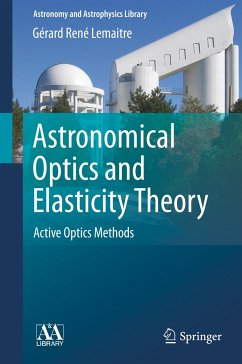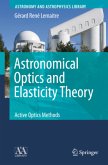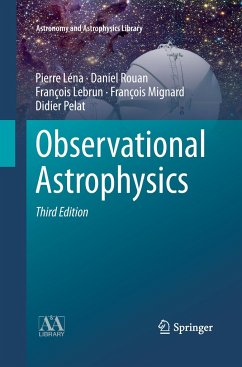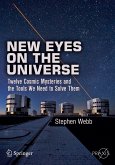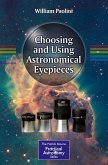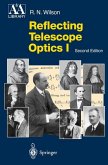This text on optics and elasticity covers the field in-depth, discusses equations in an easy-to-understand manner, includes a portrait gallery of pioneers in the field, and provides students the tools conduct their own astronomical optics projects.
Astronomical Optics and Elasticity Theory provides a very thorough and comprehensive account of what is known in this field. After an extensive introduction to optics and elasticity, the book discusses variable curvature and multimode deformable mirrors, as well as, in depth, active optics, its theory and applications. Further, optical design utilizing the Schmidt concept and various types of Schmidt correctors, as well as the elasticity theory of thin plates and shells are elaborated upon. Several active optics methods are developed for obtaining aberration corrected diffraction gratings. Further, a weakly conical shell theory of elasticity is elaborated for the aspherization of grazing incidence telescope mirrors.
The very didactic and fairly easy-to-read presentation of the topic will enable PhD students and young researchers to actively participate in challenging astronomical optics and instrumentation projects.
Astronomical Optics and Elasticity Theory provides a very thorough and comprehensive account of what is known in this field. After an extensive introduction to optics and elasticity, the book discusses variable curvature and multimode deformable mirrors, as well as, in depth, active optics, its theory and applications. Further, optical design utilizing the Schmidt concept and various types of Schmidt correctors, as well as the elasticity theory of thin plates and shells are elaborated upon. Several active optics methods are developed for obtaining aberration corrected diffraction gratings. Further, a weakly conical shell theory of elasticity is elaborated for the aspherization of grazing incidence telescope mirrors.
The very didactic and fairly easy-to-read presentation of the topic will enable PhD students and young researchers to actively participate in challenging astronomical optics and instrumentation projects.
From the reviews: "This is an utterly fascinating book to which my initial reaction was: "What do the two halves of the title have to do with each other?" The answer is that the author is interested in active optics, especially production of non-spherical mirrors under stress, an idea that goes back to Bernhard Schmidt. [...] There is some real history at the beginning (including Persian mathematicians) and a good deal of realistic future at the end, addressing how to change the shapes of surfaces in a desirable fashion with applied forces and how to inhibit changes in shape of other surfaces due to unavoidable forces. There is a section on the Chinese Schmidt, LAMOST, which has a segmented bisymmetric elliptical primary, in whose design the author was involved. [...] I do not mean to imply that the book is easy reading (nor was it meant to be) or that I expect you to dash out and acquire your own copy, unless you are seriously involved in telescope design. But just about every page has an image or an equation or a definition that invites thought." (Virginia Trimble, The Observatory, Vol. 129 (1211), August, 2009)

